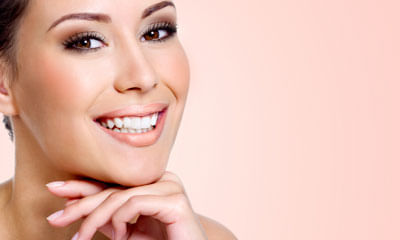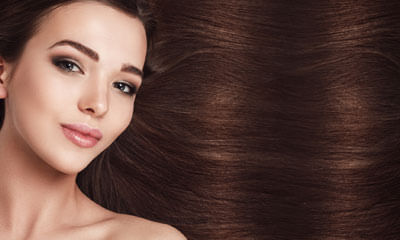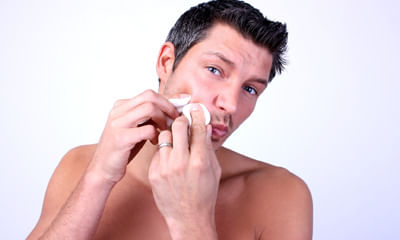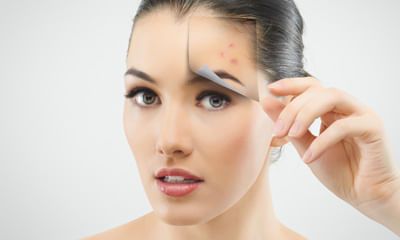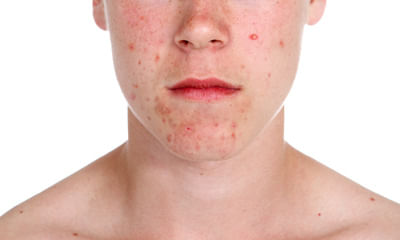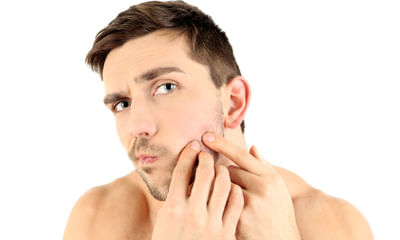Dark Spots On Hands And Feet
My feet and hands look dry, wrinkled and also have some black-brown spots. How I get good looking spotless hand and feet ...
Ask Free Question
E tell you about 6 best creams to treat dark spots. Manufacturing brands and this Acne Solutions Spot Healing Gel from the company is a.Nomarks is an ayurvedic skincare product, which is quite popular among Indian Given here are top 10 dark spots removal creams for you to check out to. Nomarks is another ayurvedic dark spot removal cream, which. Gel is a 'blessing' for women who are fighting dark spots, blemishes or other marks.
In hand fingers, lips his skin colour changed as white. Its visible as differ from rest of the skin. She get treatment n ...
Ask Free Question
It is vitiligo or leukoderma. Vitiligo is a skin condition that causes the skin to lose its color. As the skin pigment disappears, people see white (or lighter-colored) patches. Unlike Peecher, most people see changes to their skin color, but they donât feel anything. It is caused by auto-immune damage of melanocytes in skin in patchy distribution. Melanocytes make the pigment of skin known as melanin. Usually it is slowly progressive. Vitiligo is not contagious. It is not life-threatening. But, vitiligo can be life-altering. Some people develop low self-esteem. They may no longer want to hang out with friends or develop serious depression. Most people have vitiligo for life, so itâs important to develop coping strategies. Steroids may be tried to arrest it's progression but usually have not become successful in most of cases. Sunlight stimulates formation of melanin by remaining melanocytes but may also damage the skin of white patches as melanin pigment which absorbs harmful ultraviolet radiaton from reaching deep layers of skin is absent in these patches. You may need to apply sunscreens to white patches while going out in sun to protect damage to deep layers of skin at patches Treatment of Vitiligo: The type of treatment that is best for you will depend on your preference, overall health, age and where the vitiligo appears on your body. Some people choose not to treat vitiligo as it is more of a cosmetic problem than a medical problem. 1. No medical treatment (use cosmetics to add lost color): Cosmetic options include makeup, a self-tanner and skin dye. Offers safe way to make vitiligo less noticeable. Often recommended for children because it avoids possible side effects from medicine. Drawbacks: Must be repeatedly applied, can be time-consuming, takes practice to get natural- looking result. 2. Medicine applied to the skin: Several different topical (applied to the skin) medicines can repigment the skin. Prescribed for small areas. The most commonly prescribed medicine is a potent or super-potent topical corticosteroid. About half, 45 percent, of patients regain at least some skin color after 4 to 6 months. A topical corticosteroid may be combined with another medicine to improve results. Topical medicine works best in people with darkly pigmented skin. Topical medicines are most effective on certain areas of the body, such as the face. They are least effective on the hands and feet. Not all topical medicines should be used on the face. Drawbacks: These medicines have possible side effects, so patients must be carefully monitored. A possible serious side effect of using of a topical corticosteroid for a year or longer is skin atrophy. This means the skin becomes paper thin, very dry and fragile. 3. Light treatment: Uses light to repigment the skin. Patient may sit in a light box or receive excimer laser treatments. Light box used to treat widespread vitiligo; laser used to treat small area. Works best on the face; least effective on hands and feet. Effective for many patients; about 70 percent see results with excimer laser. Results can disappear. About half, 44 percent, see results disappear within 1 year of stopping treatment. After 4 years, about 86 percent lose some color restored by treatment. May cause patients with darkly pigmented skin to see areas of darker skin after treatment, but treated skin usually matches untreated skin within a few months. Requires a time commitment. Patients need 2 to 3 treatments per week for several weeks. May be combined with another treatment such as topical corticosteroid. 4. PUVA light therapy: Uses UVA light and a medicine called psoralen to restore skin color. Psoralen may be applied to the skin or taken as a pill. Bagchi (a herb also contains psoalens, and may be used. Can treat widespread vitiligo. About 50 percent to 75 percent effective in restoring pigment to the face, trunk, upper arms and upper legs. Not very effective for the hands or feet. Time-consuming, requiring treatment at a hospital or PUVA center twice a week for about 1 year. Psoralen can affect the eyes, so this treatment requires eye exams before starting treatment and after finishing treatment. To help prevent serious side effects, patients need to be carefully monitored. 5. Surgery: May be an option when light therapy and medicines applied to the skin do not work. For adults whose vitiligo has been stable (not changed) for at least 6 months. Not for children. Not for people who scar easily or develop keloids (scars that rise above the skin). Different surgical procedures available. Most involve removing unaffected skin or skin cells and placing where need pigment. Can be effective for 90 percent to 95 percent of patients. Possible side effects include failure to work, cobblestone-like skin and infection. 6. Unconventional treatment: Some vitamins, minerals, amino acids and enzymes have been reported to restore skin color in people who have vitiligo. Most have not been studied, so there is no evidence to support these treatments and no knowledge of possible side effects. Ginkgo biloba, an herb, has been studied in a clinical trial. Results from this trial indicate that the herb may restore skin color and stop vitiligo from worsening. In the ginkgo biloba trial, 10 patients given ginkgo biloba had noticeable or complete return of skin color. Two patients taking the placebo (contains no active ingredient) also had noticeable or complete return of skin color. Because some patients taking the placebo regained their skin color, more study is needed. 7. Depigmentation: This treatment removes the remaining pigment from the skin. Very few patients opt for this treatment. Removing the rest of the pigment leaves a person with completely white skin. It may be an option for an adult who has little pigment left and other treatment has not worked. Removing the remaining pigment can be an effective way to get one skin color. To remove the remaining color requires you to apply a cream once or twice day. This cream gradually removes color from the skin. Depigmentation can take 1 to 4 years. Once treatment is finished, some people see spots of pigment on their skin from being out in the sun. To get rid of these spots, you can use the cream that removed your remaining skin color. Outcome It is not possible to predict how a patient will respond to treatment. It is important to keep in mind that no one treatment works for everyone. Results can vary from one part of the body to another. Combining two or more treatments often gives the best results. Ayurvedic Treatment: Patanjali claims that:- Agnijith, a natural medicine for vitiligo, is scientifically proven for its capability to produce pigmentation in areas lacking color. The medicine is very effective for preventing vitiligo by blocking the loss of pigment cells from the skin. The medicine is also a cream with high anti-microbial properties, which is easily absorbed by the skin and increases blood circulation at the capillary level. Homeopathic Remedies for Vitiligo BOERICKE- SKIN- LEUCODERMA. Ars. Alb. Ars. Sulph.flavum. Bacillinum. Graphites. Merc sol. Nat. Mur. Nit. Acid. Nux vom. Phos. Sep. Sil. Sulph. Thuja. Aurvedic & Homeopathic doctors very enthusiastic claims but lack any controlled clinical trials and in fact their effect on vitiligo occurs very insignificant in most of cases. Actually they are not selling remedies to you but are selling hopes to you in exchange of money for ailments for which there is inadequate treatment in modern medicine (as some call it allopathy in retaliation). In fact truth reveals it self clearly when you go on practicals and medicine is a matter of truth, not a matter of faith as truth would treat your ailments, not the faith but faith is important as well to make you stick to treatment.
Hi. How long does glyco-12 takes to lighten my hands and feet? Is there any creams which does better? ...
Ask Free Question
GLYCO-12 DOES NOT LIGHTEN YOUR COLOUR BUT REMOVES SUPERFICIAL LAYERS OF SKIN TOO GIVE A FRESH LOOK No cream or drug can make your skin colour lighter than your natural skin colour which is apparant in your covered body area. The exposed area becomes a bit darker because of tanning. You can remove tanning and dark spots by melalite-XL cream or Benoquin 2%
Want to know how to remove my acne on face and dark spot is it possible or not please advise me asap. ...
Ask Free Question
Hello, due to wrong feeding habit like irregular hours of eating improper food, excess of fatty acid n starches food drink grapes, pear, plum, tomato, cucumber, carrot spinach home made juice 1/2 times apply neem sandal face wash and anti aging moisturizer (bhargava pharma) cap neem guard 1 cap in morning abf.
Hi my wife has pimples which are become now dark spots on face and the body also has many dots, can you please suggest m ...
Ask Free Question
Acne or pimples is a chronic disease involving the pilosebaceous follicles. Sebaceous glands are found most abundantly on the face and scalp, though they are present on every part of the skin except the palms of the hands and soles of the feet. Though the sebaceous gland is a mini organ, it is anatomically and functionally related to the hair follicle. Cutaneous disorders attributed to the sebaceous gland are really disorders of the entire pilosebaceous unit. The areas most commonly involved in acne are the face, upper chest, and back. Other less common areas include the upper arms, buttocks, and upper thighs. Acne arises from the interaction of 4 factors 1. Excess sebum production caused by androgenic stimulation of sebaceous glands; 2. Outlet obstruction of the sebaceous follicle arising from excess production of keratinocytes (the basic cell of the epidermis); 3. Increased proliferation of the bacteriaPropionibacterium acnes that normally live in the sebaceous follicle; and 4. Inflammation caused by sebum escaping into the surrounding skin. Excessive manipulation by the patient, causing the primary lesions to disappear and leaving excoriated, raw-looking marks. This is called acne excoriée and can cause scar formation. For removal of black marks you can apply pure coconut oil daily before sleeping, don't apply while going out in sun together with this constitutional homoeopathic treatment will give you best results.
I Have Very High Pimples with dark spots which increasing fastly through out my face and my skin becoming darker. Please ...
Ask Free Question
Acne or pimples is a chronic disease involving the pilosebaceous follicles. Sebaceous glands are found most abundantly on the face and scalp, though they are present on every part of the skin except the palms of the hands and soles of the feet. Though the sebaceous gland is a mini organ, it is anatomically and functionally related to the hair follicle. Cutaneous disorders attributed to the sebaceous gland are really disorders of the entire pilosebaceous unit. The areas most commonly involved in acne are the face, upper chest, and back. Other less common areas include the upper arms, buttocks, and upper thighs. Acne arises from the interaction of 4 factors 1. Excess sebum production caused by androgenic stimulation of sebaceous glands; 2. Outlet obstruction of the sebaceous follicle arising from excess production of keratinocytes (the basic cell of the epidermis); 3. Increased proliferation of the bacteriaPropionibacterium acnes that normally live in the sebaceous follicle; and 4. Inflammation caused by sebum escaping into the surrounding skin. Excessive manipulation by the patient, causing the primary lesions to disappear and leaving excoriated, raw-looking marks. This is called acne excoriée and can cause scar formation. For removal of black marks you can apply pure coconut oil daily before sleeping, don't apply while going out in sun together with this constitutional homoeopathic treatment will give you best results.
I have many pimples and aches on my face? Which medicine I take for my good faced. ...
Ask Free Question
Acne or pimples is a chronic disease involving the pilosebaceous follicles. Sebaceous glands are found most abundantly on the face and scalp, though they are present on every part of the skin except the palms of the hands and soles of the feet. Though the sebaceous gland is a mini organ, it is anatomically and functionally related to the hair follicle. Cutaneous disorders attributed to the sebaceous gland are really disorders of the entire pilosebaceous unit. The areas most commonly involved in acne are the face, upper chest, and back. Other less common areas include the upper arms, buttocks, and upper thighs. Acne arises from the interaction of 4 factors 1. Excess sebum production caused by androgenic stimulation of sebaceous glands; 2. Outlet obstruction of the sebaceous follicle arising from excess production of keratinocytes (the basic cell of the epidermis); 3. Increased proliferation of the bacteriaPropionibacterium acnes that normally live in the sebaceous follicle; and 4. Inflammation caused by sebum escaping into the surrounding skin. Excessive manipulation by the patient, causing the primary lesions to disappear and leaving excoriated, raw-looking marks. This is called acne excoriée and can cause scar formation. For removal of black marks you can apply pure coconut oil daily before sleeping, don't apply while going out in sun together with this constitutional homoeopathic treatment will give you best results.
I am 26 years old female. I have pimples and dark spots and and no one products suit on my skin. What should I do for ge ...
Ask Free Question
Acne or pimples is a chronic disease involving the pilosebaceous follicles. Sebaceous glands are found most abundantly on the face and scalp, though they are present on every part of the skin except the palms of the hands and soles of the feet. Though the sebaceous gland is a mini organ, it is anatomically and functionally related to the hair follicle. Cutaneous disorders attributed to the sebaceous gland are really disorders of the entire pilosebaceous unit. The areas most commonly involved in acne are the face, upper chest, and back. Other less common areas include the upper arms, buttocks, and upper thighs. Acne arises from the interaction of 4 factors 1. Excess sebum production caused by androgenic stimulation of sebaceous glands; 2. Outlet obstruction of the sebaceous follicle arising from excess production of keratinocytes (the basic cell of the epidermis); 3. Increased proliferation of the bacteriaPropionibacterium acnes that normally live in the sebaceous follicle; and 4. Inflammation caused by sebum escaping into the surrounding skin. Excessive manipulation by the patient, causing the primary lesions to disappear and leaving excoriated, raw-looking marks. This is called acne excoriée and can cause scar formation. For removal of black marks you can apply pure coconut oil daily before sleeping, don't apply while going out in sun together with this constitutional homoeopathic treatment will give you best results.
Dr, my friend had lots of pimples. She used clindamycin erytop topically & acne gone. Now her face is free of acne but s ...
Ask Free Question
She can apply homoeopathic mother tincture berberis aquifolium q on the dark spots on her skin which are produced after the resolution of the pimples.
I I have black spots and pimples on my face. I am becoming so dark day by day. Am looking like an aged person. Help me o ...
Ask Free Question
Acne or pimples is a chronic disease involving the pilosebaceous follicles. Sebaceous glands are found most abundantly on the face and scalp, though they are present on every part of the skin except the palms of the hands and soles of the feet. Though the sebaceous gland is a mini organ, it is anatomically and functionally related to the hair follicle. Cutaneous disorders attributed to the sebaceous gland are really disorders of the entire pilosebaceous unit. The areas most commonly involved in acne are the face, upper chest, and back. Other less common areas include the upper arms, buttocks, and upper thighs. Acne arises from the interaction of 4 factors 1. Excess sebum production caused by androgenic stimulation of sebaceous glands; 2. Outlet obstruction of the sebaceous follicle arising from excess production of keratinocytes (the basic cell of the epidermis); 3. Increased proliferation of the bacteriaPropionibacterium acnes that normally live in the sebaceous follicle; and 4. Inflammation caused by sebum escaping into the surrounding skin. Excessive manipulation by the patient, causing the primary lesions to disappear and leaving excoriated, raw-looking marks. This is called acne excoriée and can cause scar formation. For removal of black marks you can apply pure coconut oil daily before sleeping, don't apply while going out in sun together with this constitutional homoeopathic treatment will give you best results.

